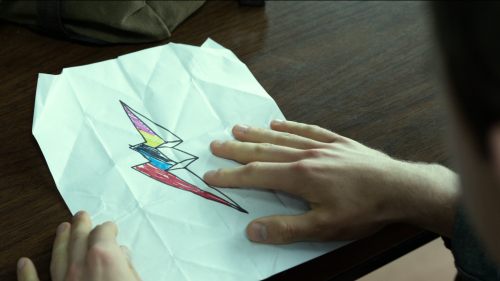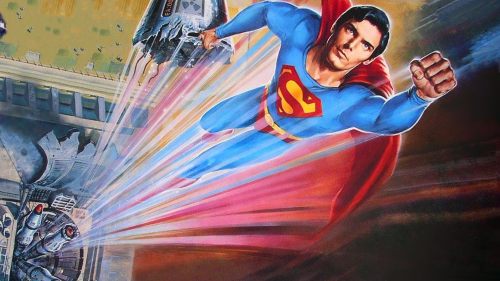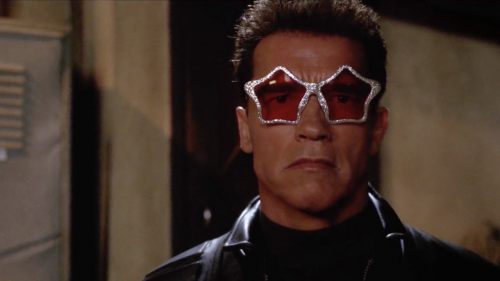Say Something Nice: HALLOWEEN (2007)
Rob Zombie has come a long way since his White Zombie days. He has come into his own as a popular filmmmaker, churning out modern classics like Lords of Salem and The Devil’s Rejects. But horror fans didn’t take kindly to his re-imagining of John Carpenter’s 1978 slasher masterpiece, Halloween. Sure, the dialogue is goofy (I’m not going to act like I don’t constantly quote that truck stop scene with Big Joe Grizzly, though) and there’s a rape scene that serves no purpose. With a 25% rating on Rotten Tomatoes and foaming-at-the-mouth critical reviews, the overall consensus is: if it ain’t broke, don’t fix it. However, there is one element of the Haddonfield horror renovation that deserves due praise, that of the Ahab to Michael Myers’ great white whale: Doctor Loomis (Malcolm McDowell).
Every cinephile has looked at a celebrated film and thought to themselves about how they would improve it if they were the one making it. Rob Zombie had the means and the opportunity to make these thoughts a reality, and when he got his chance to re-visit the series, he made sure that Loomis was more intertwined with his young charge. In a quiet aside that stirred the fandom pot in the way that only Rob Zombie can, he reasoned that the doctor’s entire role in the original was merely to “show up and say something dramatic.” Loomis, in his mind, deserved a more detailed portrayal than previously given, one grounded in an objective reality that complemented Loomis’ harbinger forewarnings.
From his first moments onscreen at Michael’s school to the final scene of him clinging to a lumbering Michael’s leg as he descends upon his next victim, Dr. Samuel Loomis can’t catch a break. He sees the warning signs with young Michael, who has been mutilating animals in his spare time. When he tries to warn Michael’s mother Deborah, she is having none of it. Not my baby, she says. He’s harmless. Such is the reception that the doctor receives whenever he cautions against underestimating that pure evil.
After he commits multiple murders including that of his own sister Judith, Michael is kept at Smith’s Grove Sanitarium, where he finds tentative companionship with a gentle Dr. Loomis. Though Michael has no recollection of the savage crimes he committed, he maintains a regular dialogue with his psychiatrist at first. Regardless of how I feel about giving a backstory to the masked boogeyman himself, seeing that interaction between the two goes a long way in strengthening their connection. Loomis no longer seems like a raving madman; here, he’s a professional who continuously rang the alarm bell, only to have it fall upon deaf ears.
Loomis and his sessions act as a tool to show young Michael’s state of mental decay. He provides further insight about 10 year-old Michael’s motives as the boy talks about his homemade masks and why he likes them. It all goes toward giving a background on Michael, which Carpenter explicitly avoided in his Lovecraftian original. In this regard, the weary Doctors of past and present converge on a single premise: that he recognizes from his first encounters with Michael that Michael is no longer a normal person (if he ever was), and that he is becoming something much more deadly.
In the Loomis recordings, he becomes more and more dejected as Michael becomes more and more unbalanced. And yet, he comforts Michael, hugging him as Michael laments that he can’t go home. The doctor even convinces “the suits” to let Michael outside during one of their sessions. 2007’s Halloween shows a deeper connection between Loomis and Michael Myers in 45 minutes than in the series entire. In an outdoor session, Loomis appeals to whatever humanity Michael has left:
“Please, if you don’t communicate with me, how can I help you? I’m here to help you. I feel an utter failure, at the moment, that I just can’t get through to you.”
Despite the care he receives, Michael is simply evil. And despite the care he gives, Loomis learns time and again throughout Halloween that there’s no stopping this train. This theme reoccurs all along the film’s 109-minute runtime: that of Loomis doing everything he’s supposed to do, shouting until he’s blue in the face, and still failing his patient, and failing to stop him. Even in the final chase of the film, the theme rings true. Laurie Strode, bloodied and exhausted, cowers at the end of a hallway. Loomis arrives just in time and shoots Michael, just as he did in the original. This time, though, Loomis painfully begs Michael to stop before firing, and then again. Michael is literally descending upon a helpless girl and Loomis is still trying to get through to him. Laurie temporarily scurries away, but the ever-unstoppable Michael eventually catches up with her. He comes back after Laurie and drags her into the old Myers home. A weary Loomis again tries to figuratively penetrate the mask, even admitting out loud that he failed Michael. It’s a final emotional appeal to the boy he treated at Smith’s Grove so many years ago, the boy he knew better than anyone else alive. But the old Michael is gone, replaced by an absolute void of humanity and emotion that nearly crushes his former psychiatrist’s skull as he pleads with him. Wounded and weakened, he resorts to clinging to Myers’ leg to stop him. This simple image embodies the internal struggle that Loomis grapples with: he tries to exert control, but as always, Loomis can’t prevent Michael Myers from killing.
While this does happen in the 1978 film, it’s to a far lesser degree and lacking the grounding clinical tether that the remake provides at Smith’s Grove and beyond. A re-visit to Carpenter’s Halloween with a focus on Loomis’ arc does reveal some truth about Rob Zombie’s ranting-and-raving characterization of the “old” Loomis. He does seem mad. He does only show up to say something dramatic. Pleasence’s performance was by no means bad, and Carpenter’s film is a horror masterpiece. To be honest, I still prefer the original Halloween to the re-imagining. But while the film is often maligned in the way that most reboots of classic films are maligned, there’s no doubt that the role of Doctor Loomis in Zombie’s Halloween is a marked expansion and improvement over the original mythos. Deal with it.



